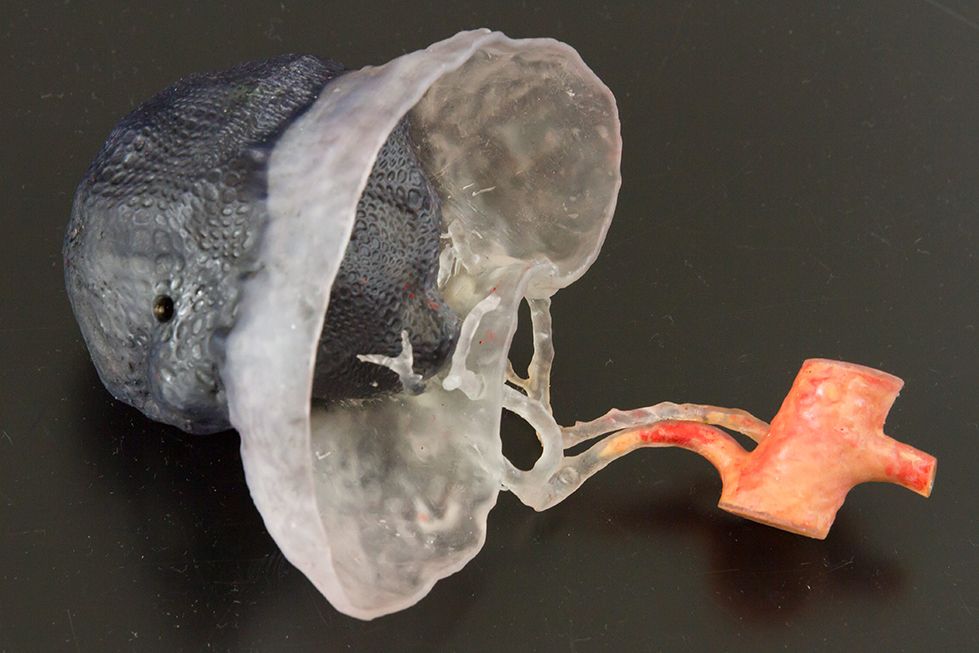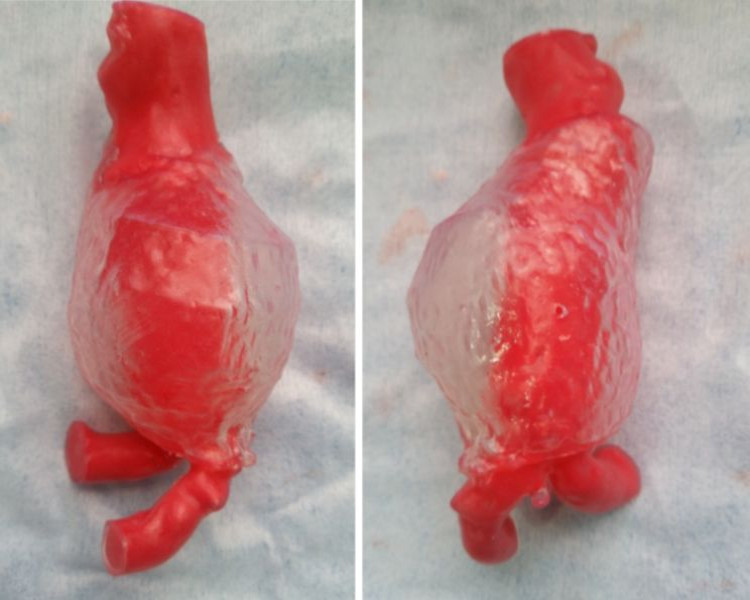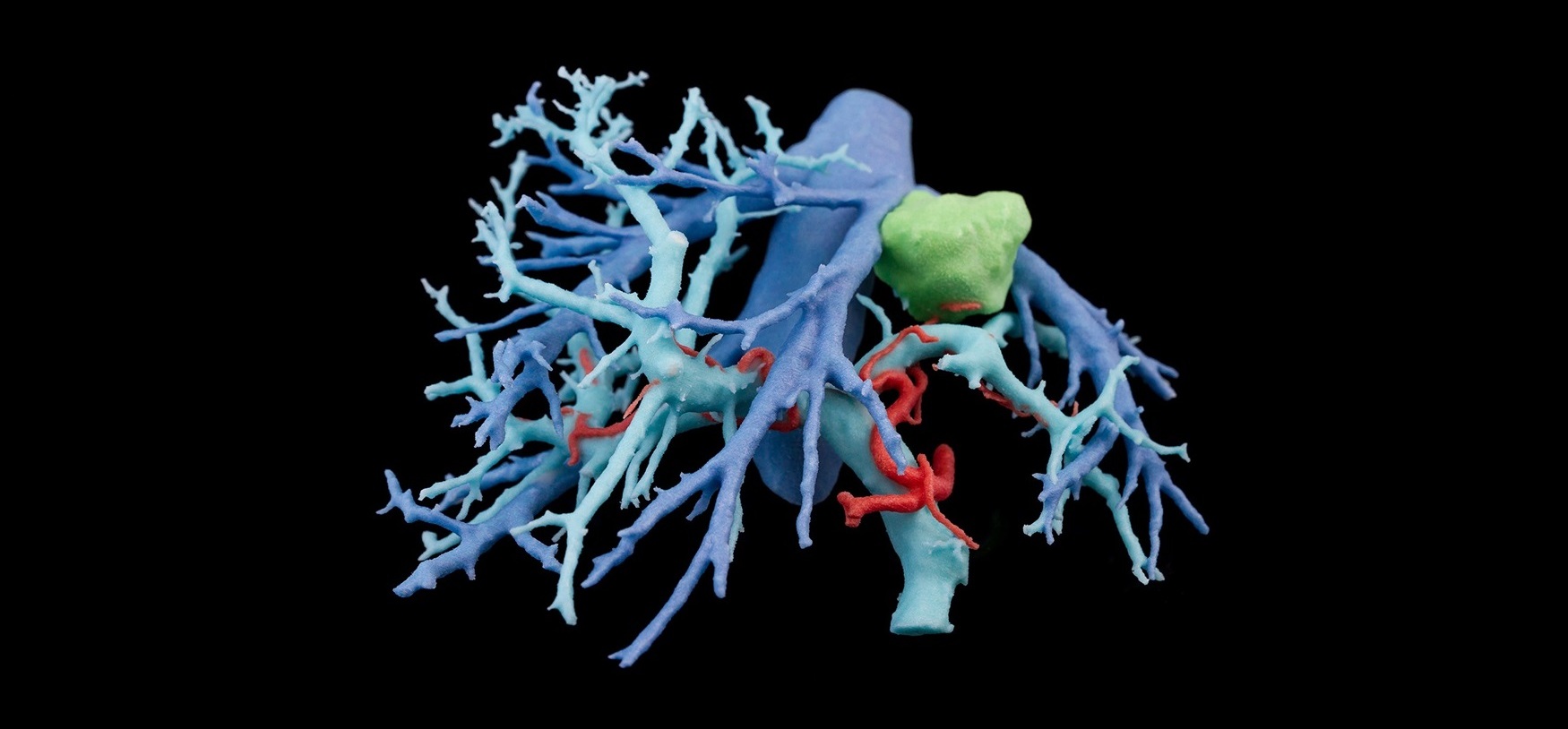MEDICAL
How to 3D Print Multicolored Models with Formlabs SLA
Multicolored 3D-printed anatomical models allow for an easier differentiation of tissues compared with models printed in only one color. While 3D printing in the medical field becomes increasingly accessible for hospitals through desktop 3D printers, upscaling to a printer enabling color printing still entails a hefty investment. This is why Materialise launched an internal research project into the combination of the 3D modeling medical software Materialise Mimics inPrint and a resin-based Formlabs SLA 3D Printer as a more cost-efficient alternative. Mr. Shehryar Khan, Application Engineer at the Materialise DLP Competence Center (Malaysia), walks us through.

Mr. Shehryar Khan has 5 years of hands-on experience with 3D Printing technologies and a strong background in research, developing and preparing new applications for the 3d printing medical marketplace.
Materialise DLP Competence Center Malaysia is focused on DLP 3D Printing technology. It has the ambition to investigate novel uses of the DLP technology and tailor Materialise software technology to maximize its use. The Materialise DLP Competence Center is staffed with highly specialized engineers and equipped with a state-of-the-art research lab.
Image-based medical software and 3D Printing have revolutionized the health industry. Health experts across the globe can, for example, create tangible 3D-printed replicas of the patient’s anatomy. Mr. Khan, what’s the added value of multicolored models?
“A deep understanding of the pathological anatomy is key to planning a treatment procedure that aims to achieve the best patient outcome possible. Printing in one color is useful if you need to visualize just one type of tissue – such as complex trauma fractures, a CMF reconstruction or visualization of a heart disease. Multicolored models, by contrast, become particularly relevant when you need a way to differentiate between tissues; such as tumor and surrounding organ tissue, or veins and nerves in an organ.”
But most desktop 3D printers in hospitals only offer a single color solution.
“Correct. The only available 3D printing technology enabling multicolor 3D Printing would be the Multi Jet Printing and Binder Jetting. We do notice more and more hospitals invest in implementing 3D Printing in their workflow – especially after achieving the significant milestone of receiving an FDA clearance for the Materialise Mimics inPrint software in junction with a desktop 3D printer for medical use to print patient-specific anatomical models or diagnostic purposes. Implementing an industrial 3D printer that enables color printing would require a major investment on the part of the hospital in terms of finance, space, expertise, and so on. This is why we wanted to explore the possibility of creating a multicolored 3D-printed anatomical model using a desktop 3D printer (Formlabs SLA) and the Materialise Mimics inPrint software.”

Multicolored 3D Printed Anatomical Model of Renal Tumor, SLA

Multicolored 3D Printed Anatomical Model of Mandible, SLA
How can medical software and a desktop 3D printer enable us to create a multicolored model?
“Hollow and Color. Those are the key ingredients. It’s all about hollowing the region of interest (ROI) and injecting acrylic and primer paint before continuing with post-processing techniques. First, you apply Materialise Mimics inPrint to segment imaging data into the ROI. Next, you apply the hollowing feature to create an internal space without altering the external geometry. This will also allow you to inject color. The ‘Fix Wall Thickness’ tool enables you to verify the hollowing was done correctly and, if necessary, to fix any errors.”
Are there any specific features to pay attention to when hollowing the region of interest using image-based medical software?
“Yes. It is crucial to perforate the hollowed part so as to create drain holes and air vents: these holes are essential since they allow for a drainage of resin and evacuation of the air. In other words, it helps you prevent any bubbles in your design. Moreover, they will be used as an injection entrance point for coloring. You can use the ‘Cut Tool’ in Mimics inPrint or, if you work with Magics, ‘Perforator Tool’.”
What would you recommend when creating drain holes and air vents?
“Drain holes should have a diameter of 2 to 3 mm, air vents 1 to 3mm. Drain holes should be made in regions which are likely to act as a cup and hold resin and face towards the resin tank when oriented. Additionally, we recommend creating drain holes or air vents in areas closer to the build platform. You can optimize the final orientation of the model using Preform software.”

Multicolored 3D Printed Anatomical Model - Abdominal Aortic Aneurysm, SLA

Multicolored 3D Printed Anatomical Model - Kidney, SLA
Desktop 3D printers are resin-based. What resin is recommended to create a multicolored model?
“To ensure the best outcome, using transparent resin to execute the actual 3D printing is recommended. Once printed, it is important to check for resin residue trapped in small chambers or cavities. Air spray can be very helpful at this point! After the internals are cleaned, the next step is to remove the supports, smoothen the surface and dry the part.”
We now have a transparent 3D-printed model, but how do we add color to it?
“You can paint your 3D-printed anatomical model by injecting color into the sections through the drain holes. To do so, you create a balanced mixture of water, acrylic paint and primer: this is essential to achieve a perfect color adhesion. The paint-to-primer-to-water ratio should be adapted according to the painting tools you are attempting to use, but the recommended paint-to-primer-to-water ratio would be: for syringe [needle specs] injections - 1:1:1 or 1:1:2; For pipette [outlet specs] injections: 2:2:1. Once dried, the colored part undergoes surface finishing through sanding, glossing and UV curing.”
Creating a multicolored 3D-printed model using medical software and a desktop 3D printer seems like a cost-efficient alternative for the expensive industrial options.
“The workflow I’ve just described allows for the creation of multicolored 3D-printed anatomical model in hospital 3D printing labs destined for, in particular, research, communication, and educational purposes. This can indeed be done at a relatively low cost, but at the expense of some manual post-processing work. That being said, this 3D printing workflow will result in some limitations once you start designing fine anatomies. For example: since a wall thickness of 1 mm is used for hollow sections, parts that are smaller than 2mm in size won’t be able to be hollowed. In fact, it appears that the internal diameter of the hollowed section needs to be greater than 1 mm for the hollow to print. Hence, small parts cannot be hollowed and 3D-printed. Additionally, small hollows are more susceptible to air bubbles.”

3D Printed Anatomical Model - Heart, SLA

Multicolored 3D Printed Anatomical Model - Heart, SLA
Mr. Sheryar Khan is the lead engineer at the DLP Competence Center (Malaysia), where the above-described internal research project was conducted as part of its mission to explore novel uses of DLP technology while maximizing the application of Materialise software. The Materialise research team performed this workflow on different 3D-printed models. In some cases, instead of color, a different surface pattern has been applied to differentiate between the tissues. All the 3D-printed models have shown both advantages and disadvantages, but one fact remains constant: to create accurate patient-specific 3D anatomical models within a short lead time you need a dedicated medical software package with powerful segmentation tool and user-friendly workflow.
You too can try the most comprehensive 3D medical software available on the market.
Request your evaluation license today and experience first-hand how Materialise Mimics inPrint enables you to engineer on anatomy with comfort and ease.
You might also like

